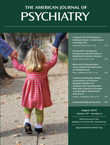Principles and Practice of Child and Adolescent Forensic Mental Health
I agreed to review this updated and expanded classic for several reasons. I have used previous editions to make sure I did not overlook forensic issues prior to testifying as an expert. I have known the senior editor, Elissa Benedek, for many years and have used her writings to educate myself in matters of custody. I was curious and open to exploration of this revised edition of the 2003 Manfred S. Guttmacher Award-winning book. The title has changed slightly, and two of the editors and a number of the authors are new. This edition contains new chapters on 21st-century topics ranging from telepsychiatry to the Internet, and it updates and enlarges upon basic child and adolescent forensic mental health matters. The new chapters on special education and the chapters on youth violence are welcome and enlightening.
The book is dedicated to "the vulnerable children who face a complex system of justice." To help those children in that system, one needs forensic experts who know how to conduct the necessary forensic evaluation, review and know the pertinent legal elements and avoid the legal mousetraps, cover the pertinent literature, and present the data in a manner most useful for the child and most helpful to the courts and mental health agencies. This authoritative sourcebook is a wonderful guide that will enlighten the novice and enhance the experts' knowledge. All participating in child and adolescent forensic mental health matters will want this classic on their shelf for quick reviews and by their side for exploration of both new and familiar areas.
The book is divided into seven sections. Two are edited by Benedek, three by Ash, who is Director of Psychiatry and the Law at Emory University, and two by Scott, who is Chief of Psychiatry and the Law at University of California Davis. Each editor also contributes to several chapters. The sections are: Basics, Legal Regulation of Practice, Child Custody, Child Abuse, Youth Violence, Juvenile Offenders, and Civil Litigation.
The editing is superb. Each of the 33 chapters refers to other chapters when indicated. The writing is clear, informative, useful, and enjoyable. It is written by seasoned professionals who practice. Reading each chapter is like having a wonderful discussion with a favorite teacher. Textbooks may tend to put one to sleep, but not this one.
The "Key Points" at the end of the chapters are useful and reinforce learning by repetition. One of the key points in the new chapter on special education indicates the importance of the inclusion of that chapter in this book. The author states, "Education benefits greatly from the expertise of mental health professionals, but it is critical to understand the educational environment when working with school-age children and their families."
The case presentations at the beginning of chapters and the follow-up of the cases at the end of chapters challenge the reader to think through what might happen and then check their thinking against what actually happened. They also illustrate clinical points. In some chapters, I did find some advice with which I did not concur. For example, in a custody evaluation I disagree with sharing what one parent says about the other (p. 150). The author did not provide the rationale for that recommendation. For researchers, the book generates ideas about areas in desperate need of study. Overall, there are pearls galore clinically, legally, and ethically. The references alone will save one enough professional time to pay for this gem.



